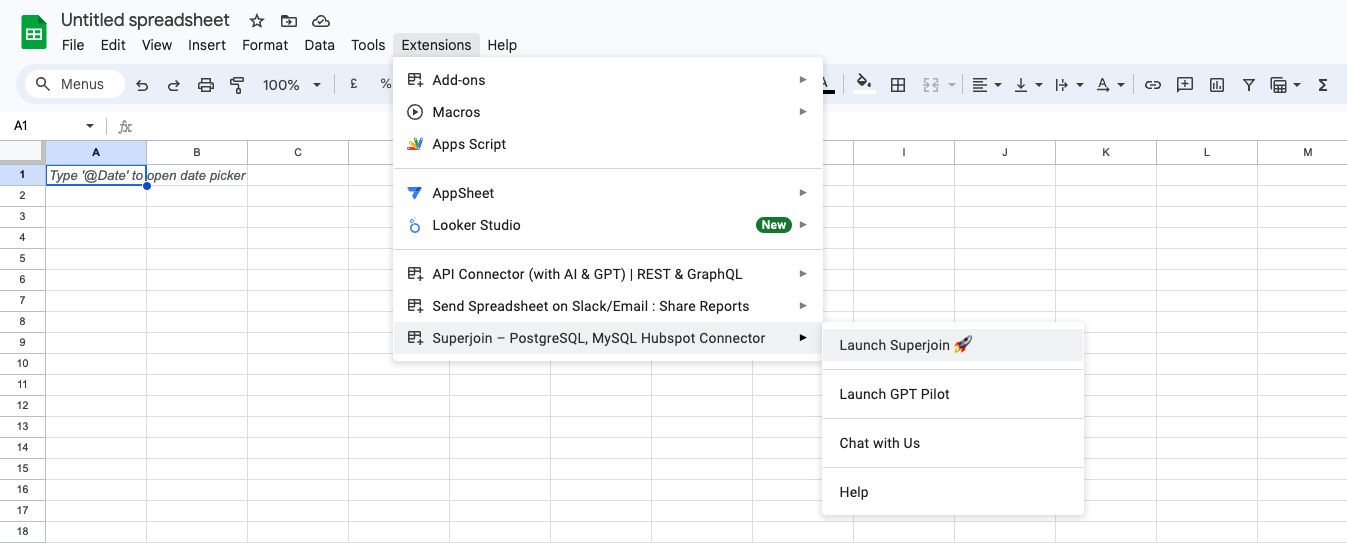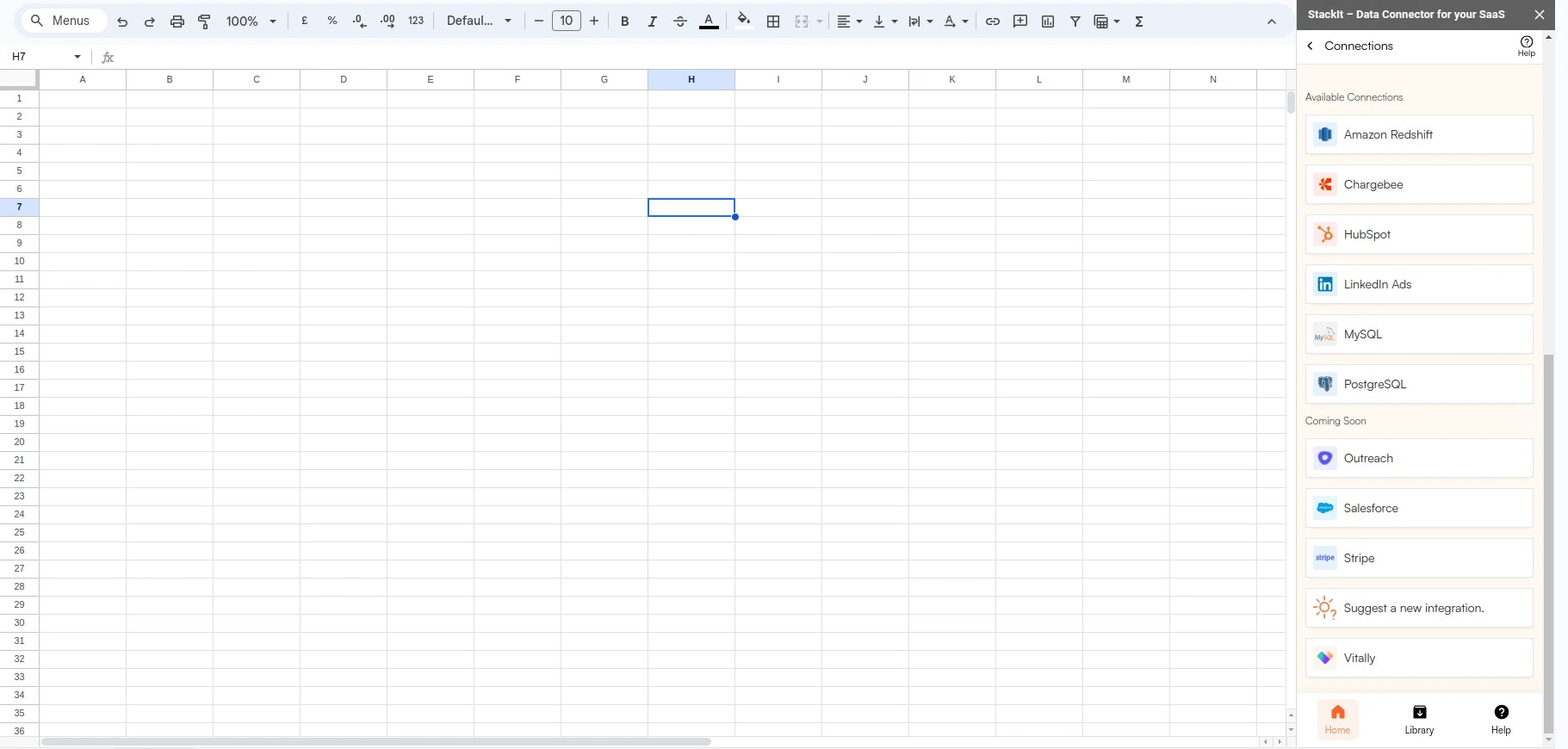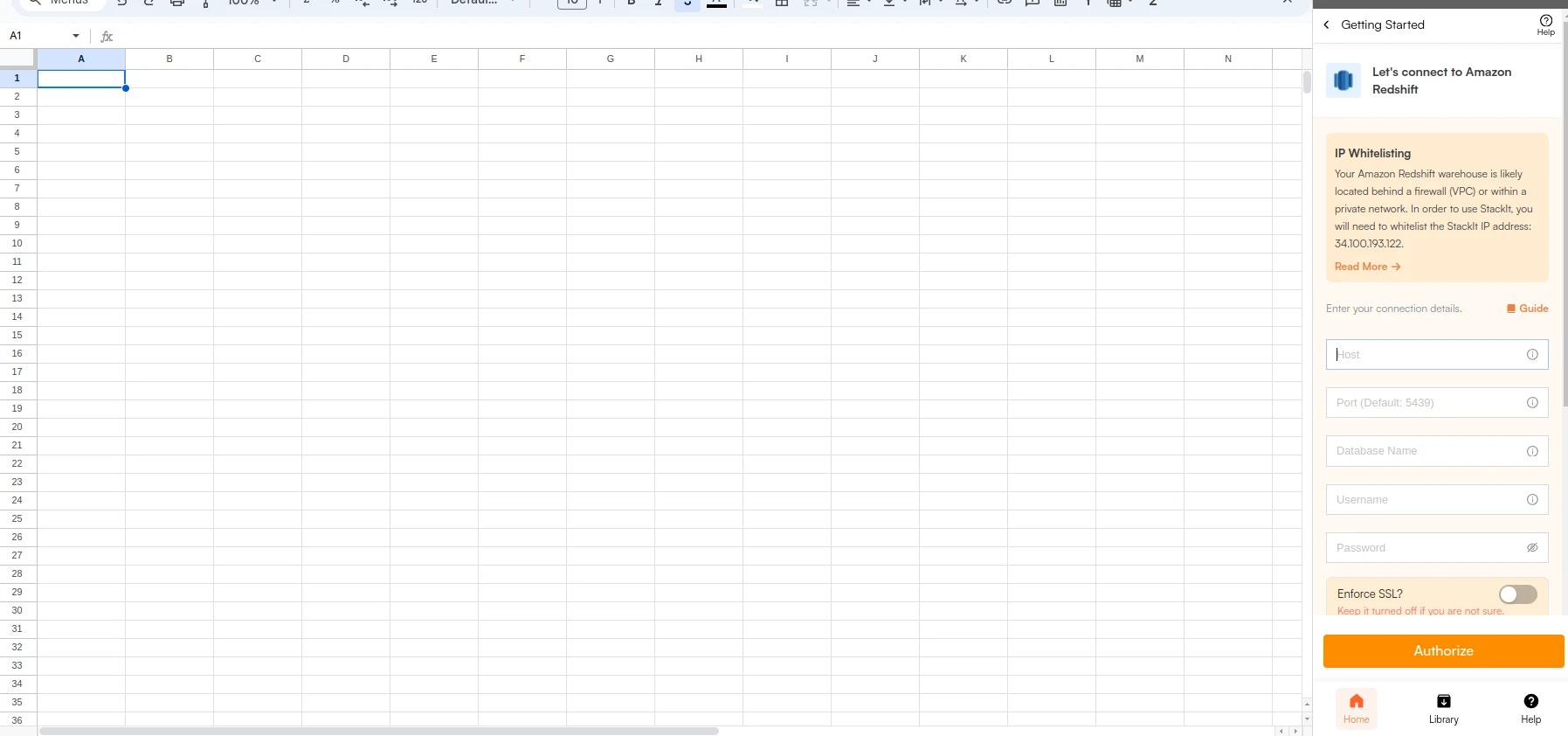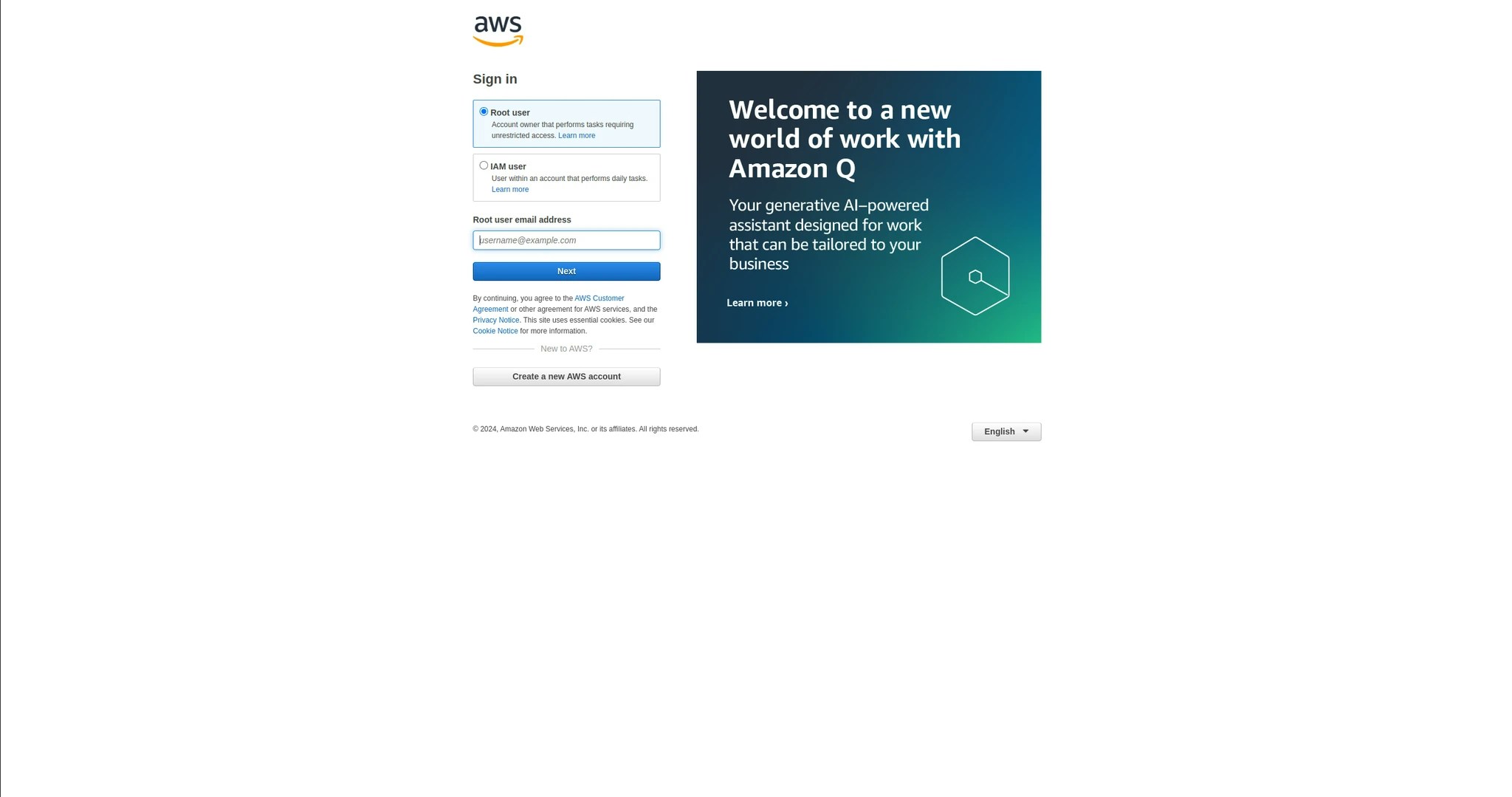Step-by-step walkthrough: How to connect Redshift to Google Sheets
1
Launch Superjoin
Once Superjoin is installed, navigate to the 
Extensions menu tab in Google Sheets. Launch Superjoin from here. You should now see Superjoin running as a side panel on the right side of your screen.
2
Pick Redshift
Select Redshift from the list of available data sources.

3
Connect your Redshift Database
Enter your connection details.

| Field | Description | Example |
|---|---|---|
| Host | This is the endpoint of your Redshift cluster, which acts as the host for connection purposes. | your-cluster-name.123456789012.us-west-2.redshift.amazonaws.com |
| Port | Use the specific port for your Redshift database. | Default is 5439 |
| Database | Specify the name of the database within your Redshift cluster that you want to query. | mydatabase |
| User | Enter the username for connecting to your Redshift database. | awsuser |
| Password | Provide the password corresponding to the specified user. | password123 |

4
Login to AWS
Log into the AWS Management Console and navigate to the Redshift dashboard.

5
Select the workspace
Select your workspace to view its details.In the Workspace Configuration tab, you can find the Endpoint and Port information.





6
Enable SSL
Implementing SSL for your database connections is a critical step toward securing your data. By following the specific steps you can protect your database from unauthorized access and ensure that your data remains confidential and intact during transmission.
7
Complete logging in
Return to your Google Sheet & Superjoin. Click “Authorize” to finalize the connection settings. Once connected, Superjoin will display the Data Preview to confirm everything is running smoothly.